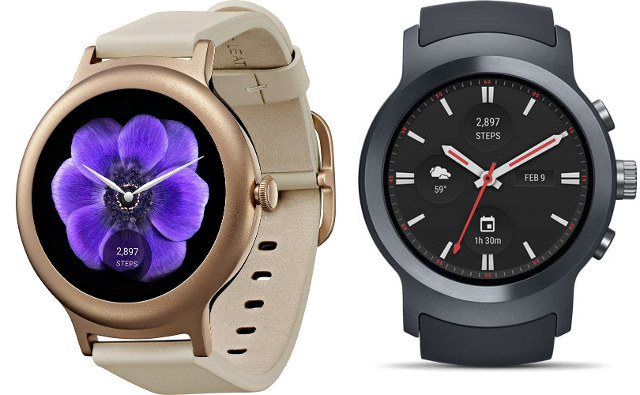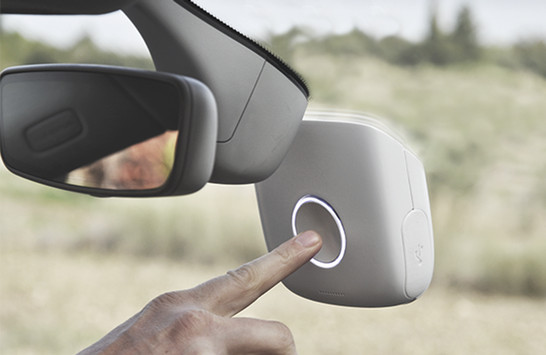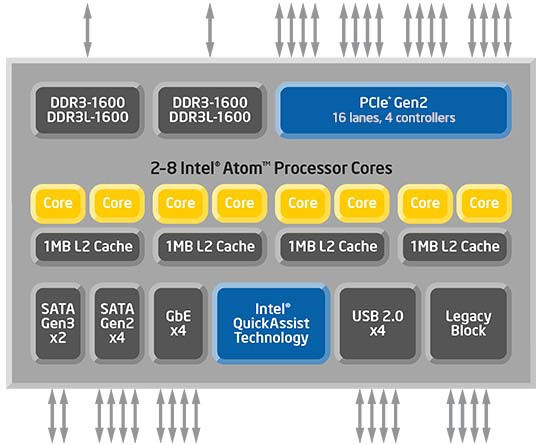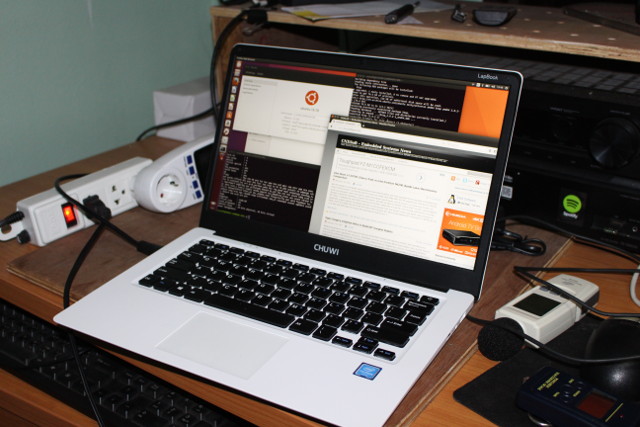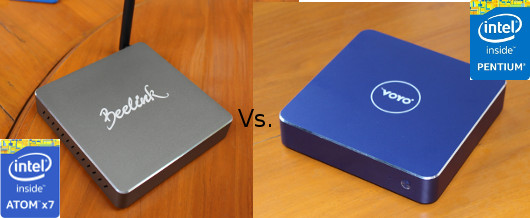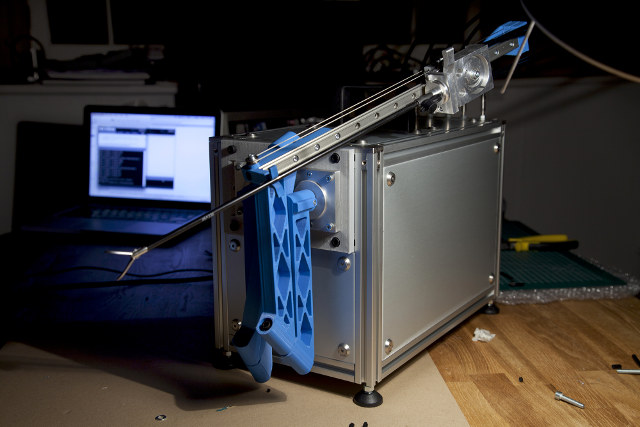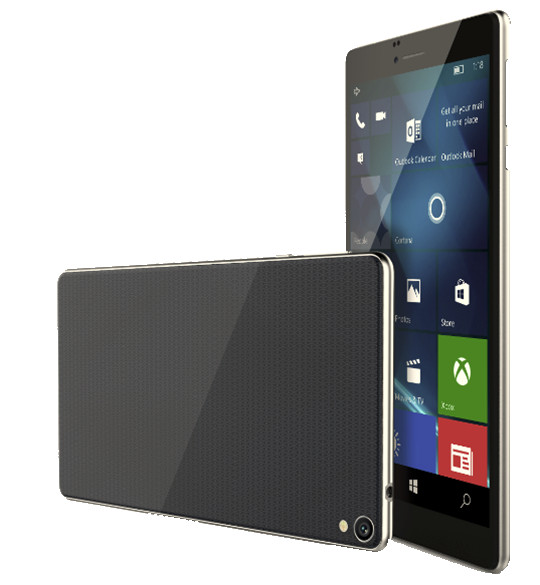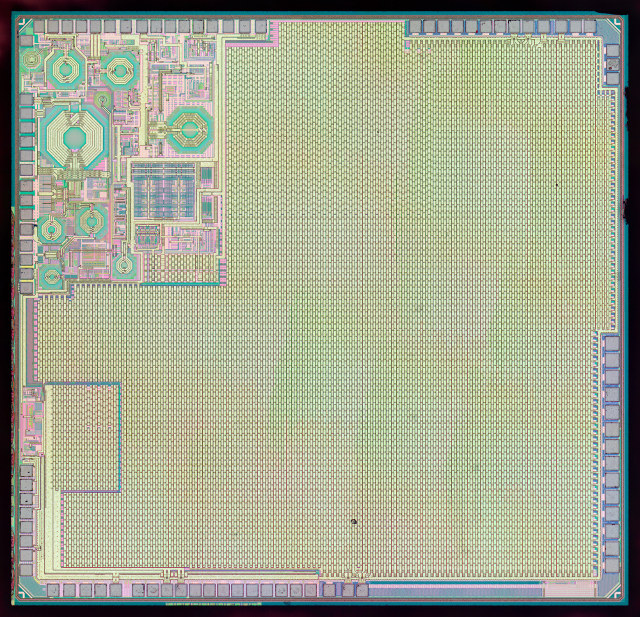Google released an Android Wear 2.0 developer preview last May at Google I/O 2016, with the new operating system now supporting standalone apps and keyboard and handwriting input method, featuring a new user interface with material design support, integrating Google Fit & Google Assistant support, and supporting many of the features available in Android 7.0 Nougat like data saver, and emojis. The first two devices running the latest Android Wear 2.0 will be LG Watch Style and Watch Sport smartwatches. LG Android Wear 2.0 watches specifications can be found in the table below (Source: XDA) LG Watch Style LG Watch Sport (W280A) Display 1.2″ 360×360 P-OLED (Gorilla Glass 3) 1.38″ 480×480 P-OLED (Gorilla Glass 3) Processor Snapdragon Wear 2100 @ 1.1GHz RAM 512MB 768MB Storage 4GB Connectivity Wi-Fi, Bluetooth 4.2 Wi-Fi, Bluetooth 4.2, LTE, NFC, GPS Sensors Accelerometer, Ambient light sensor, Gyro sensor Heart Rate Sensor (PPG), Gyroscope, Accelerometer, Barometer […]
Dride is a Voice Controlled Dashcam Driving Assistant Powered by a Raspberry Pi Board (Crowdfunding)
Next Thing introduced Dashbot Car Dashboard Assistant based on CHIP Pro module late last year, and it will get some competition with Dride, a driving assistant powered by Raspberry Pi, that can also be voice controlled like Dashbot, but includes a Pi camera to record videos, and alert the users of dangers using computer vision, for example when they drive too close to the car in front. The system leverages Raspberry Pi board and Pi Camera, and adds an outer shell, Dride’s Raspberry Pi HAT, and a car charger & cable. Some of the key features listed for the Dride include: Cloud support – Upload and store driving videos to your Dride profile ADAS – Safety alerts in case of lane deviation or frontal collision Voice – Voice commands for navigation & messaging Connectivity – Bluetooth, WiFi, and GPS The developers also provide “Dride – Passenger Seat Driver” app for […]
Older Intel Atom C2000 Series Server Chips May Stop Working After a While, and There’s no Fix
It takes time and efforts to debugging hardware and software to get a product right, but some bugs may be hard to reproduce, or only happen over time, and it appears some Intel Celeron C2000 series processor for microservers may stop working after about 18 months, with the likelihood of problems increasing over time, due to clock signals that stop functioning. This is documented in Intel Atom Processor C2000 Product Family Specification Update, with Errata AVR 54 explaining the issue: AVR54. System May Experience Inability to Boot or May Cease Operation Problem: The SoC LPC_CLKOUT0 and/or LPC_CLKOUT1 signals (Low Pin Count bus clock outputs) may stop functioning. Implication: If the LPC clock(s) stop functioning the system will no longer be able to boot. Workaround: A platform level change has been identified and may be implemented as a workaround for this erratum. Status: For the steppings affected, see Table 1, “Errata […]
Installing Ubuntu 17.04 on CHUWI LapBook 14.1 Apollo Lake Laptop
[Update: The instructions below do not work with the newly manufactured models because CHUWI completely changed the hardware The company also disabled the Linux option in the BIOS (See comments in this post) So you may need to use rEFInd boot manager or isorepin.sh script to install Linux (and some drivers may still not work out of the box) ] Since I’ve completed the review of CHUWI LapBook 14.1 with Windows 10 last week-end, I’ve decided to give it a try with a Linux distribution, and I chose to go with a daily build of Ubuntu 17.04 since we’ve seen Apollo Lake platforms need a recent Linux kernel. While Ubuntu 17.04 will be officially release in April 2017, likely with Linux 4.10, the current (alpha) build comes with Linux 4.9. I had already quickly booted Ubuntu 17.04 on the Laptop from a USB drive flashed using Rufus right after the […]
Intel Atom x7-Z8700 (Cherry Trail) vs Intel Pentium N4200 (Apollo Lake) Benchmarks Comparison
Mini PCs based on Intel Apollo Lake processors have started selling, and they supposed to be upgrades to Braswell and Cherry Trail processor. I’ve recently had the chance to review Voyo VMac Mini mini PC powered by Intel Pentium N4200 quad core processor, that’s the fastest model of the Apollo Lake N series, and of course I ran some benchmarks, so I thought it would be interesting compare the results I got with an Atom x7-Z8700 “Cherry Trail” mini PC, namely Beelink BT7 which I reviewed last year. Both machines are actively cooled with a small fan, and storage performance is similar, albeit with a slight edge for the Apollo Lake SSD. A ratio greater than one (green) means the Apollo Lake processor is faster, and if it is lower than one (red) the Cherry Trail processor win. Benchmark Beelink BT7 Intel Atom x7-Z8700 @ 1.6 / 2.4 GHz (2W […]
Open Surgery Initiative Aims to Build DIY Surgical Robots
Medical equipments can be really expensive because of the R&D involved and resulting patents, low manufacturing volume, government regulations, and so on. Developed countries can normally afford those higher costs, but for many it may just be prohibitively expensive. The Open Surgery initiative aims to mitigate the costs by “investigating whether building DIY surgical robots, outside the scope of healthcare regulations, could plausibly provide an accessible alternative to the costly professional healthcare services worldwide”. The project is composed of member from the medical, software, hardware, and 3D printing communities, is not intended for (commercial) application, and currently serves only academic purposes. Commercial surgical robots can cost up to $2,000,000, but brings benefits like smaller incisions, reduced risks of complications and readmissions, and shorter hospital stays thanks to a faster recovery process. There have already been several attempts within the robotics community to come up with cheaper and more portable surgical […]
Emdoor EM-QL8170 is One of the First LTE Tablets Designed Thanks to Allwinner & Qualcomm Partnership
Allwinner and Qualcomm announced a partnership last year to help Chinese manufacturers design entry-level LTE tablets based on Qualcomm Snapdragon processors, and Allwinner collaborated with Emdoor one several designs including EM-QL8170 LTE tablet with a Snapdragon 210 processor and a 6.98″ display. Emdoor EM-QL8170 specifications: SoC – Qualcomm Snapdragon 210 (MSM8909) quad core Cortex A7 processor up to 1.3 GHz with Adreno 304 GPU @ 400 MHz System Memory – 1 or 2 GB DDR3L Storage – 8 or 16 GB flash + micro SD slot Display – 6.98″ IPS touchscreen display with 1280×720 resolution Connectivity – 802.11 b/g/n WiFi, Bluetooth 4.1 LE, and GPS Cellular Connectivity – LTE Cat 4 with 2x micro SIM card slots Camera – 2.0MP front-facing camera, 8.0MP rear camera Audio – 1x microphone, 1x 3.5mm audio jack, likely some speaker somewhere… USB – 1x micro USB port Battery – 2850 mAh battery Dimensions – 189.7 […]
Oh Look… Espressif ESP32 Die-shot! That’s Pretty!
Espressif ESP32 was launched last year as a faster and upgraded version of ESP8266, with a dual core processor, 802.11 b/g/n WiFi and Bluetooth 4.0 LE. Boards based on the processor are still priced much higher than the ones based on ESP8266 ( although we’re only talking about $20 here), and shops have trouble keeping stocks, so either there’s a huge demand, there’s some manufacturing bottleneck, or maybe Espressif wants to take it slow at the beginning in case some hard to find bugs are found in the Silicon. Nevertheless, the guys at Zeptobar got hold of some ESP32 modules, and took some pretty die-shots. The die size is 2960×2850 µm. The prettiest part is clearly the RF section zoomed in below. If you wonder how it compares to ESP8266 die-shot, Zeptobar has you covered. Jean-Luc Aufranc (CNXSoft)Jean-Luc started CNX Software in 2010 as a part-time endeavor, before quitting his […]


